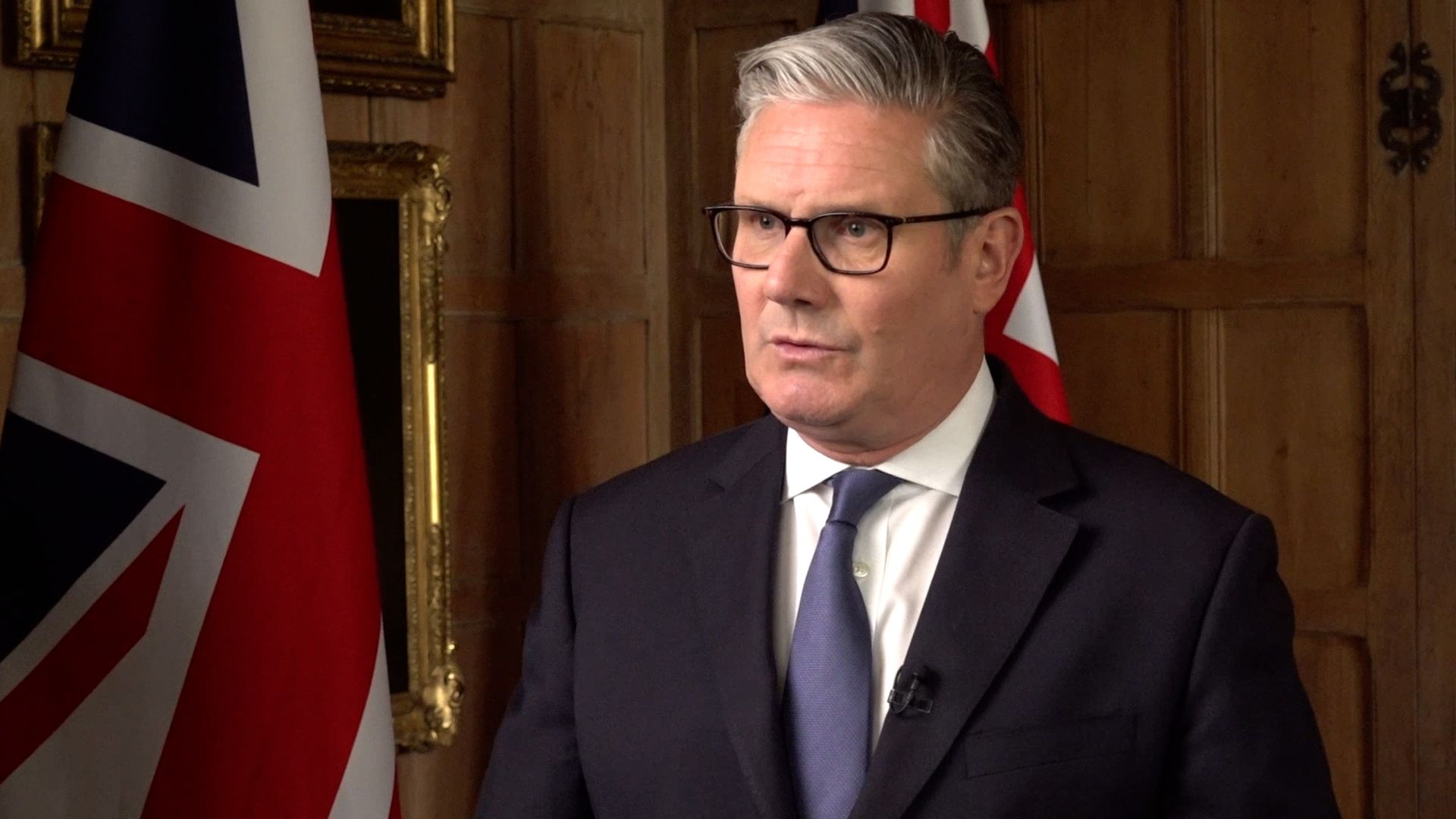
“A dictatorship is ruled by a group of people selected by one person. The people who run the government are responsible to the dictator and no one else. The country of Turkmenistan under Gurbanguly Berdimuhamedow is a good example of a dictatorship. While the country has a constitution, a parliament, and elections, Berdimuhamedow is able to make changes to the rules as he wishes whenever he wants.”
—Oklahoma Historical Society, Types of Government: Dictatorship
On May 22, the Supreme Court doubled down on its strongman theory of the presidency. With three justices in dissent, the Court determined that President Donald Trump’s order removing two federal officials at key independent agencies would remain in place while the issue of their legality makes its way through the judiciary. The two-page order promises that the Court remains open-minded on the ultimate issue, which is whether Congress can set up semi-independent regulatory boards whose members can’t be fired on a president’s whim. But how the majority frames the legal question—and the Court’s cavalier treatment of the stakes in the case—makes it appear inevitable that Trump will soon enjoy his preferred form of government. I searched online for a scholarly Red State source to describe that preference; the Oklahoma Historical Society seems to have nailed it.
Cathy Harris and Gwynne Wilcox are high-level public officials whom Congress protected against at-will dismissal by the president. During the first 100 days of his second term, Trump fired at least 25 such officials. Harris was chair of the Merit Systems Protection Board (MSPB), which protects federal civil servants against “prohibited personnel practices,” such as dismissal for not supporting the president’s party. Under the Civil Service Reform Act of 1978, a member of the MSPB “may be removed by the President only for inefficiency, neglect of duty, or malfeasance in office.” Trump cited none of these grounds for firing Harris.
Wilcox was a Democratic member of the National Labor Relations Board (NLRB), whose mission is to protect workers’ organizing rights and stop unfair labor practices. Under the National Labor Relations Act, an NLRB member “may be removed by the President, upon notice and hearing, for neglect of duty or malfeasance in office, but for no other cause.” Wilcox was not charged with neglect, malfeasance, or any other “good cause,” much less afforded notice and a hearing. With only two of five seats filled, the NLRB lacks a quorum to perform its functions. As with Harris, Trump cited no statutory ground for dismissing Wilcox.
Trump administration officials are no doubt hoping that firing tenure-protected administrators will prompt the Supreme Court to hold multimember independent regulatory agencies unconstitutional. Five years ago, a 5-4 decision, Seila Law v. Consumer Finance Protection Bureau, held that Congress violates the separation of powers when it purports to protect the tenure of the principal administrator of a single-headed agency, such as the Director of the Consumer Finance Protection Bureau (CFPB). However, the Court held out the possibility that a different rule might apply to agencies headed by a collective panel or commission, such as the MSPB or the NLRB. The Court, therefore, declined to overrule the Court’s unanimous 1935 decision in Humphrey’s Executor v. United States, which upheld the constitutionality of the independent Federal Trade Commission (FTC) after President Franklin D. Roosevelt tried to oust a Calvin Coolidge appointee, who has been reappointed by Herbert Hoover.
Trump’s administration had targeted Humphrey’s Executor almost from the start of his new term. A letter sent February 12 by Acting Solicitor General Sarah Harris to Senator Richard Durbin, the Illinois Democrat and ranking member of the Judiciary Committee, said the Justice Department had determined “certain for-cause removal provisions that apply to members of multimember regulatory commissions are unconstitutional and that the Department will no longer defend their constitutionality.” The letter cited the FTC, the NLRB, and the Consumer Product Safety Commission as examples of agency independence that the department would no longer defend. Not surprisingly, the letter represents the implementation of a Project 2025 recommendation.
Even with miles to go, the Harris and Wilcox cases have traveled a circuitous path in the courts. Both dismissed commissioners challenged their firings before a federal trial court and won. On March 4, a D.C. district court judge who had initially barred Harris’s ouster with a temporary restraining order conclusively found that Harris’s firing was unlawful and restored her to her position. On March 6, another D.C. federal district court judge reached the same conclusion as to Wilcox and imposed the same remedy. Three weeks later, however, a split three-judge panel of the U.S. Court of Appeals for the D.C. Circuit stayed (meaning, temporarily blocked) the lower courts’ orders. Judge Justin R. Walker, a Trump-appointed judge in the majority, argued that the Roberts Court had effectively rendered Humphrey’s Executor irrelevant to contemporary independent agencies because “the Court’s recent opinions have ‘characterized the “independent agencies” as executive and have rejected the notion that these agencies exercise quasi-legislative or quasi-judicial powers’” that are not constitutionally guaranteed to be within presidential control. Then, two weeks following the panel’s decision, a majority of the Court of Appeals decided to take the case en banc—that is, to rehear it before the entire court—and undid the temporary stay, thus placing Harris and Wilcox back in office. The government applied to the Supreme Court via its emergency docket to re-impose the stay. The Court’s May 22 order granted its wish.
There are at least four disheartening signals in the majority opinion. The first is that the Court continues to characterize the federal workforce as exercising executive power “on [the president’s] behalf.” Some agencies may help the president exercise powers he enjoys directly under the Constitution. But most agencies—and certainly the NLRB and MSPB—exist to fulfill missions assigned to them by Congress. These agencies are created by legislation, not presidential order. Without a delegation of statutory authority, the executive branch would have no power to do what these agencies do. According to the Constitution, the president’s relationship to executive agencies is supervisory; he is to “take care that the laws be faithfully executed,” but not to perform those duties personally. The agencies’ obligation is not to the president but to the law.
Second, the Court indulged Trump in explaining how it balanced the contending interests of the parties. It allowed the president to violate two statutes in part because, while the case is pending, “the Government faces greater risk of harm from an order allowing a removed officer to continue exercising the executive power than a wrongfully removed officer faces from being unable to perform her statutory duty.” As Justice Elena Kagan pointed out in dissent, this framing confuses the president for “the Government,” and it minimizes the public interest stakes by treating the plaintiffs’ grievances as merely personal. As Kagan explains, the point in balancing the parties’ competing interests is “not that Wilcox and Harris would love to keep serving in their nifty jobs. What matters instead is that Congress provided for them to serve their full terms, protected from a President’s desire to substitute his political allies.” The majority gives Congress’s decision no weight.
Third, and perhaps most bizarrely, the majority goes beyond the case to avoid roiling securities markets. Their hostility to agency independence logically threatens tenure protection for the “Federal Reserve’s Board of Governors or other members of the Federal Open Market Committee.” Placing the Fed under political control would open bank regulation and setting interest rates to naked political manipulation—and terrify investors. Presumably for this reason, the majority hints at a bespoke doctrinal carveout, even if every other independent agency is unconstitutional: “The Federal Reserve is a uniquely structured, quasi-private entity that follows in the distinct historical tradition of the First and Second Banks of the United States.”
The conspicuous problem with that assurance is that—consistent with the Court’s generally glib reading of Founding Era history—there is virtually no resemblance between the 19th Century banks of the United States, on one hand, and the Board of Governors of the Federal Reserve System, on the other. As Columbia law professor Lev Menand points out, the Board of Governors of the Federal Reserve System is a regulatory agency—it regulates banks just as the Securities and Exchange Commission regulates securities markets—and the First and Second Banks of the United States were banks: “The Federal Reserve Board is not like the First or Second Bank at all. It follows in a completely different, one might even say competing, historical tradition. That tradition is the tradition of expert, multimember commissioner regulation of economic sectors.” In other words, the Board of Governors resembles the FTC more than it does the defunct Banks of the United States.
Finally, the Court persists in calling the 9-0 Humphrey’s Executor decision a “narrow” exception to the Roberts Court’s new rule that Congress may not insulate executive branch administrators from at-will removability. The majority’s rereading of the 1935 case, treated for 90 years as “the rule,” not the “exception,” reveals the majority’s hubris. Humphrey’s Executor was correctly decided just nine years after Myers v. United States, a 6-3 holding that Congress could not condition presidential removals on Senate consent. In the wake of Myers, the 1935 Court’s unanimity allowing Congress to limit the permissible grounds for unilateral presidential removals was extraordinary. Its membership made it more so. The Court’s unusually strong bench included both ardent anti-New Dealers—the so-called “Four Horsemen”—and some of the most progressive Justices of the early twentieth century. Four of the Justices had voted with the majority in Myers. Yet all nine agreed it was within Congress’s powers to insulate the FTC’s membership from at-will removability. They spoke through a single opinion.
Technically, the May 22 order does not mean Humphrey’s Executor is doomed. There are three ways in which it might be preserved. The likeliest, unfortunately, is the least intellectually defensible, but the stay order may hint at it. A majority might try to characterize the 1935 FTC as somehow less “executive” than the current version, but this would be constitutional nonsense. What constitutionally distinguishes the FTC from, say, the State Department is that the subjects over which it exercises authority have nothing to do with powers granted to the president by the Constitution, and its core tasks could have been performed by the other branches of government. They are, in the parlance of the 1935 Court, “quasi-legislative” and “quasi-judicial.” The FTC’s rulemaking could have been done entirely by Congress. Congress could have left antitrust violations and unfair and deceptive trade practices to be policed entirely by private plaintiffs in federal court. Congress need not have given the executive branch any power at all over the economy; the Constitution did not. That is why limiting the removability of FTC Commissioners does not deprive the president of any vested Article II power.
The happiest way to preserve Humphrey’s Executor would be for the Roberts Court to admit its mistake and abandon its commitment to metastasizing the unitary executive theory. As I have explained elsewhere, the Roberts Court misreads the constitutional text and makes a hash of constitutional history. Worse, it insists that the president’s control of the bureaucracy of the world’s most powerful nation in 2025 should somehow be shaped by the Justices’ largely imaginary understanding of what the Framers bequeathed George Washington in 1787. I do not expect any corrective epiphany to occur; the conservative legal movement has championed a too-autocratic view of the presidency since the Reagan Administration, and Chief Justice John Roberts was an early crusader.
The third possibility, which would be both face-saving and intellectually defensible, would be adhering to Humphrey’s Executor and making removability depend on whether Congress structures an agency to be single-headed or multi-headed. Following stare decisis, it would be enough for the Court to adhere to its usual criteria for respecting precedent: Was the precedent correct at the time? (Yes.) Has there been substantial reliance on its holding? (Yes.) Have we learned anything since then to cast doubt on the precedent’s viability? (No.) Is the doctrine workable? (Extremely. Any judge can distinguish between a single-member and a multimember agency.) As a D.C. Circuit judge, Brett Kavanaugh had even argued that independent multimember agencies were better for governance than independent single-headed agencies. Because the two-page order issued on May 22 does not itself overrule Humphrey’s Executor, the Court could invoke stare decisis and resolve the current cases in favor of the ousted officials.
What is most important in these cases is not whether Congress’s decision to make any agency independent was right. In some cases, like that of the MSPB (which exists to protect the integrity of the civil service), it is easy to see why agency independence would seem critical. This is especially likely for agencies engaged almost entirely in administrative adjudication. On the other hand, why the Consumer Product Safety Commission should be independent, even though the Environmental Protection Agency is not, is undoubtedly a question open to reasonable disagreement. The key point is that it is Congress’s job, not the president’s—and not the Supreme Court’s—to decide on the agency structure most necessary and proper to serve Congress’s ends. At-will firing may suit Trump’s desire to change the rules whenever he wants—to govern in the style that the Oklahoma Historical Society imputes to Gurbanguly Berdimuhamedow. But the Constitution does not require those who run the government to be responsible to Trump and no one else. The Supreme Court should erode checks and balances no further.
The post Another Supreme Court Blow for Autocracy? appeared first on Washington Monthly.


 2 months ago
21
2 months ago
21 



.jpg.webp?itok=1zl_MpKg)





 Bengali (Bangladesh) ·
Bengali (Bangladesh) ·  English (United States) ·
English (United States) ·